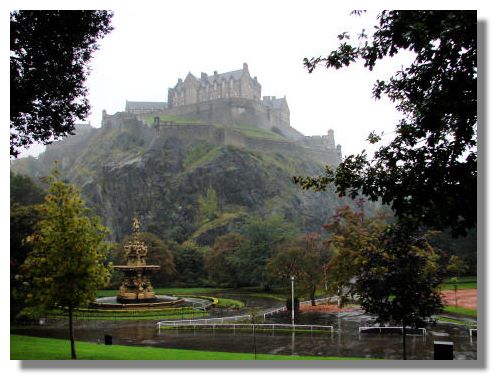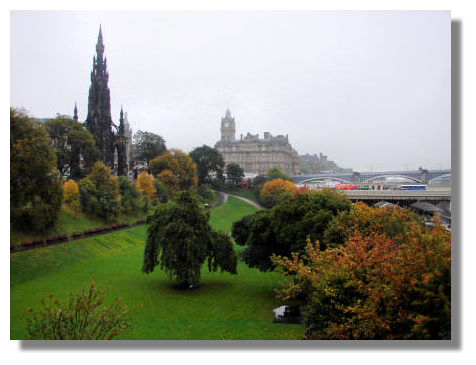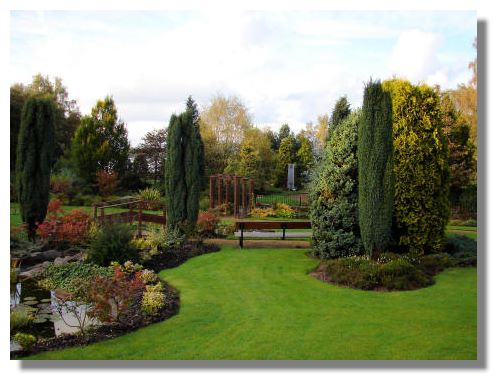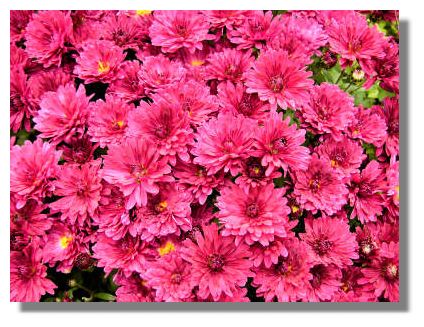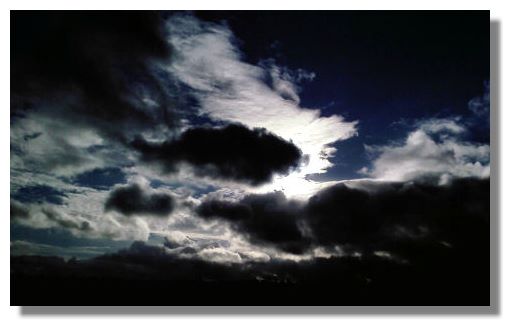Each week the Rampant Scotland Newsletter includes a number of photographs which illustrate the weather and the seasons, plus the flora and fauna of the current week around Scotland. There are often so many such graphics of Scottish subjects worth including that this separate "colour supplement" is created where some of the best pictures can be displayed in a larger format. Here is this week's crop of Scottish views!
There are times when that mist around Edinburgh Castle makes it disappear from Princes Street below. On this occasion, while the rain was quite heavy, the clouds were not quite low enough to create that effect. The Ross Fountain was not flowing on this occasion - but with all the rain, there wasn't really any need for it - and few people passing by to see it!
At one time, the area below Edinburgh Castle and part of its High Street (leading to the Palace of Holyroodhouse down the "Royal Mile") was a loch, which was used as a sewer for the Old Town. Thousands of oyster shells (a cheap food in the old days) have been found in excavations below. Nowadays, of course, the smart shops in Princes Street have a unique view over the gardens, with the castle above.
The soaring monument to Sir Walter Scott in Princes Street Gardens stands out against the grey sky, while the clock tower above the Balmoral Hotel has a hint of mist around it. The colours of autumn are well to the fore in this picture. The clock is always kept two minutes fast - to encourage rail travellers heading for the adjacent Waverley Station to hurry up!
It was a bit brighter here at Drumpellier Country Park, with a few patches of blue in the sky, looking towards the "Peace Garden". In medieval times, Drumpellier was the farming grange of the Monks of Newbattle Abbey, which gives rise to the name of Monklands, the historical name for the surrounding area.
Even in mid-October, button chrysanthemums provide a splash of colour in the Drumpellier gardens. Many years ago chrysanthemums were moved by botanists and horticulturalists into the genus "Dendranthema." But although professional growers in the UK adopted that name - nobody else did. Eventually, after much confusion, the plants were "returned" to the original genus and are now (thank goodness) accepted everywhere as chrysanthemums!
The sun, low in the afternoon sky, is trying hard to peek out from behind the clouds here!
If you want to look back at earlier editions of this Colour Supplement, there is an Index Page
